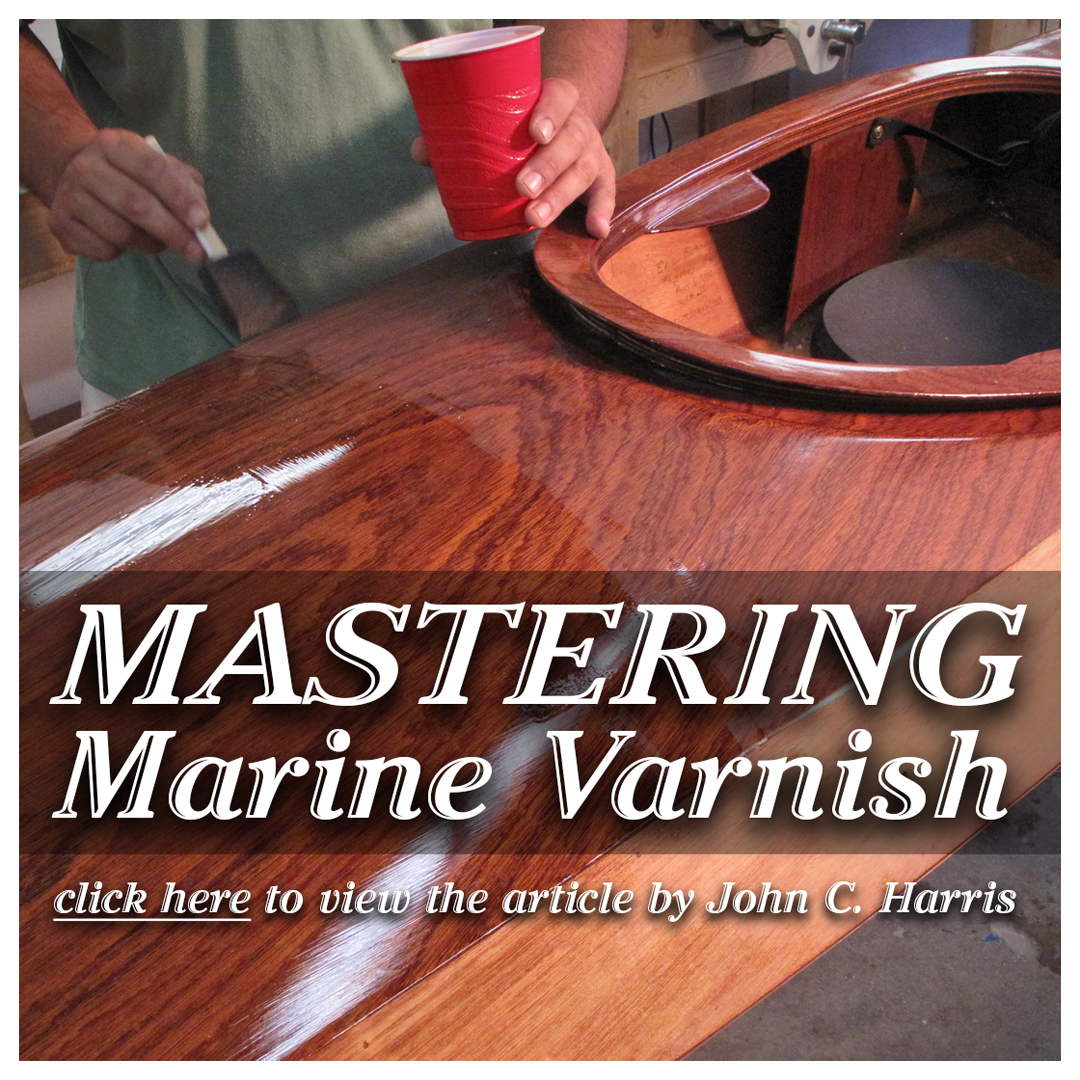Builders' Forum |
|
| ↓ Scroll to Last Comment ↓ | Forum Guidelines | Builders' Forum | |
Repair of raised white bumps/lines in fiberglass (delamination?)
Many apologies, since this question has almost certainly been posted before (I couldn't find it by searching).
I have a 7 year (!!!) project with fiberglass that has been covered with a tarp outside most of the time, but still received some UV damage. After sanding down the surface oxidation, the fiberglass looks mostly OK, but in some places there are parallel lines of raised white bumps at the intersection of the fiberglass fibers. Essentially, it looks like the Night Heron with delaminated fiberglass in John's blog post (What Happens When Stitch-and-glue Boats Get Old? (clcboats.com)), except not across the whole bottom, but instead in certain areas. I should say that this is NOT epoxy starvation or air bubbles. At one point, the fiberglass was perfectly clear and smooth.
Assuming that is delamination, my theory is that repeated heat/cold cycles on the strip-built hull caused flexing, which weakened the fiberglass in those areas and caused delamination. They occur only on one side of the hull, the one that (mostly) was facing the sun.
REPAIR: Any strong opinions on whether I should I remove the fiberglass from the entire bottom with a heat gun and re-fiberglass everything (which I'm happy to do),
OR should I remove only the sections with issues with a heat gun and re-fiberglass those (maybe 25% of the bottom side with issues),
OR should I sand down the rough surface bumps until smooth, then add a second layer of fiberglass (6 oz) on top to make stronger?
Thanks for the advice :)
4 replies:
RE: Repair of raised white bumps/lines in fiberglass (delamination?)
That sounds like a better idea than 1000 words, Laszlo!
https://pasteboard.co/8OHC5aczk9OF.jpg
The white spots in the center are raised (not pits). They go along the fibers of the cloth in lines. This isn't over the whole hill - only in spots.
RE: Repair of raised white bumps/lines in fiberglass (delamination?)
Craig,
In the upper right you have a general dulling with some shiny pits. That's the hallmark of a sanded intermediate (not ready for varnish, needs an additional coat or 2) epoxy surface.
The problem white bumps don't look like delamination to me. They look like popped bubbles filled with epoxy dust. I know that you said in the past the epoxy was clear and smooth, but that could have been an illusion based on the light angle and how closely you were looking at it. Notice in the lower right corner the 2 "craters" with the white rims. Those are popped bubbles. The tops were sanded off when you took off the oxidized layer but they are large enough that they didn't fill with dust to form a white circle. The white dots look to me as if they are also popped bubbles, but small enough that they acted as traps for the sanding dust.
The other possibility is that glass application was slightly bumpy and that there were tiny "peaks" that were saturated just enough to turn transparent but not enough to protect against a light sanding. When you took off the oxidized layer you also sanded into the tops of the peaks and what you're seeing is exposed roughened glass. But I think that's much less likely than popped bubbles.
A way to test both theories is first examine the white spots with at least 10x magnification. 40x would be better. A packed dust surface will look different from frayed and cut glass fibers. If you don't have a suitable magnifier, take a toothpick, possibly sharpened, and try to take out some of the dust from a larger white spot. If it comes out and can be broken into dust particles, it's a popped bubble. If it just gets frayed, it glass that's been sanded. Finally, wipe denatured alcohol onto the white dots. If they turn transparent they're scuffed solid epoxy. If the white washes out of the spots they're epoxy dust in popped bubbles. If they stay white they're sanded glass. Note that the alcohol test is potentially ambiguous because packed dust in the right-shaped hole could be stuck and not wash out.
I think that in either case the sunny side is a red herring. It seems more likely to me that it's an artifact of the glassing process, that one side was done slightly differently than the other. That happens a lot, especially if the builder always starts on the same side. Normally the differences are sanded out when prepping for the finish.
As far as what to do about it, since there's no delamination I don't see any reason to remove the glass. If it was my boat and my diagnosis was correct, I'd either clean out the dust from the pits or just accept the white dots from sanding into the glass and continue on where I'd left off by putting more thin layers of epoxy and sanding to get to a finish-ready surface.
One final disclaimer - I'm doing all this pontificating based on the picture that you posted and, without criticizing, it's not the sharpest focus. That said, do the tests to confirm my theories before you believe and act on them, just in case I've got it wrong.
Good luck,
Laszlo
RE: Repair of raised white bumps/lines in fiberglass (delamination?)
Thank you very much for the long and very careful analysis of my (poor - it's an iPhone!) picture.
Armed with a magnifying glass and a razor blade, I went to town this evening on the boat. And of course my original theory of delamination was incorrect.
I used the razor blade to carefully dig into the white spots. There was definitely some fiberglass fibers. I think your second theory of raised/ floating fiberglass is the most likely culprit - initially invisible, but exposed when I sanded. Underneath the fibers there was solid epoxy - so, epoxy was touching the wood, and the fiberglass was floating on top. I've had that happen before (and it's usually obvious when you are sanding if this has occurred) - but not in this way. I think that when I left it for so long, partially sanded, the (damaged) fibers lifted up, probably helped by water and dirt getting to them. Very strange. That would also explain why only the intersection of the weave pattern was affected, and only in a few areas.
Thanks very much again, and I'm off to go sand and finish this project!













RE: Repair of raised white bumps/lines in fiberglass (delamination?)
» Submitted by Laszlo - Wed, 5/31/23 » 6:11 AM
Any chance of a picture?